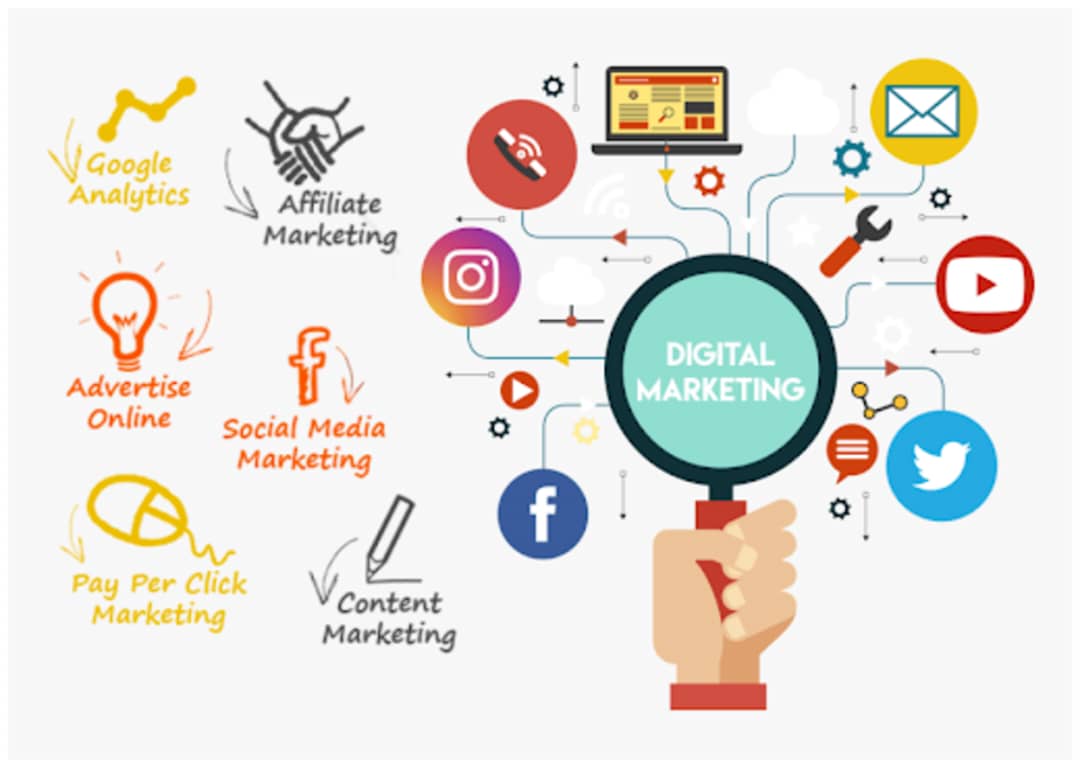Digital business transformation has become a buzzword in the business world, and for good reason. With technological advances changing the way we work and live, companies (VSEs and SMEs) are realizing that they must transform their activities to remain competitive in the digital age. In this article, we’ll look at what digital transformation is, why it’s important, what are the benefits and challenges, and what are the steps to successful digital business transformation .
What is digital transformation?
Digital transformation refers to the integration of digital technologies into all areas of a business, fundamentally changing the way it operates and delivers value to its customers. It is a strategic process of using technology to improve the customer experience, streamline operations and increase efficiency. Essentially, digital transformation is about using technology to reimagine and reinvent the way a business or start-up operates.
The importance of digital business transformation
In the digital age, businesses that fail to keep up with technological advancements risk becoming obsolete. Digital transformation is not only important to stay relevant, but also to improve business performance and maturity. Digital technologies can help businesses streamline operations, reduce costs, and improve customer experience, which can translate into increased revenue and profitability.
In addition, digital transformation is essential to meet the changing needs and expectations of customers. With the rise of platforms, the digital revolution and connected objects, customers expect companies to be available online, to offer personalized experiences and instant satisfaction. Digital transformation enables companies to meet these requirements and stay ahead of the competition.
What are the benefits of digital business transformation?
Digital transformation offers many benefits to businesses, including:
Improved customer experience
Digital technologies allow companies to interact with customers in new and innovative ways. These can include one-to-one marketing, chatbots, and self-service options that make it easier for customers to get the information they need. By providing a seamless customer experience, businesses can increase customer loyalty and satisfaction.
Increased efficiency and productivity
Digital technologies can automate repetitive tasks, streamline operations and improve collaboration, resulting in increased efficiency and productivity. For example, cloud-based technologies allow employees to work from anywhere, while data analytics can provide insights that help businesses make better decisions.
New sources of revenue
Digital transformation can open up new sources of revenue for companies. For example, businesses may offer digital products or services, use social media for advertising, or partner with other businesses to offer complementary services.
Competitive advantage
By embracing digital technologies, businesses can gain a competitive advantage over their peers. For example, businesses can use data analytics to better understand customer behavior, which can help them develop better products and services.
What are the challenges of digital business transformation?
Digital transformation is not without challenges. Here are some of the most common challenges:
Resistance to change
One of the biggest challenges of digital transformation is resistance to change. Employees may be resistant to new technologies, new processes or new ways of working, which can slow down the transformation process.
Lack of skills and expertise
Digital transformation requires specialized skills and expertise, which may be lacking within the organization. Companies may need to hire new talent or upskill existing employees to adapt to new digital uses that can drive digital transformation.
Integration with existing systems
Integrating digital technologies into existing systems can be challenging. These may not be compatible with new technologies, which can lead to additional costs and complexity.
Privacy and Data Security Concerns
Digital transformation can increase the risk of data privacy and security breaches. Companies should ensure that they have strong security measures in place to protect customer data and prevent cyberattacks.
Statistics on the digital transformation of companies
Digital transformation is no longer just a buzzword – it’s a critical business imperative for large enterprises. Here are some statistics that highlight the importance of digital transformation:
- According to an IDC report, global spending on digital transformation is expected to reach $2.3 trillion by 2023.
- 70% of companies have or are working on a digital transformation strategy, according to a report by Altimeter.
- Companies that have embraced digital transformation are 26% more profitable than their peers, according to a report by MIT Sloan Management Review.
Stages of a successful digital business transformation
Digital transformation can be a complex and daunting innovative process. Here are some steps businesses can take to achieve digital transformation success:
Step 1: Define the vision and strategy
The first step in digital transformation is to define the marketing vision and strategy. It is about identifying the business objectives that the digital transformation will achieve, such as improving the customer experience or increasing efficiency. The vision and strategy must be communicated throughout the organization to ensure that everyone is aligned and working in the same direction which makes it the basis for digital transformation.
Step 2: Build a digital transformation team
Digital transformation requires a team of experts with diverse skills and expertise. This team should include people from different departments, such as IT, marketing, and operations, as well as outside consultants who can bring fresh eyes. The team must be empowered to make decisions and move the transformation process forward.
Step 3: Assess the current situation
Before implementing digital transformation, it is important to assess the current state of the organization. It is about identifying the strengths and weaknesses of current processes, systems and technologies. The assessment should also take into account cultural and organizational factors that may influence the transformation process.
Step 4: Identify technologies and tools
Once the current state has been assessed, the next step is to identify the technologies and tools that will enable digital transformation. These can be cloud-based technologies, data analytics, artificial intelligence, or customer relationship management (CRM) software. Technologies and tools must be aligned with business goals and strategy.
Step 5: Develop a roadmap
Digital transformation must be implemented in stages, using a clear roadmap that specifies the timetable, the steps and the expected results. The roadmap should be flexible enough to adapt to changing business needs and priorities.
Step 6: Communicate and Train
Digital transformation requires a cultural change within the organization. Employees should understand the benefits and purpose of digital transformation and be trained in new technologies and processes. Communication and training must be ongoing throughout the transformation process.
Tools and technologies for the digital transformation of companies
Digital transformation requires a series of tools and technologies to enable the transformation process. Here are some of the main tools and technologies:
cloud computing
Cloud computing allows companies to store and access data and applications via the internet. This helps reduce IT costs, increase mobility, and improve scalability.
Data analysis
Data analysis is about using data to gain insights and make better decisions. This can include predictive analytics, which uses machine learning algorithms to predict future trends.
Artificial intelligence
Artificial intelligence (AI) is the use of machine learning algorithms to automate tasks, such as chatbots or voice assistants. AI can also be used for predictive analytics and personalized marketing.
Customer Relationship Management (CRM) Software
CRM software allows businesses to manage customer interactions and relationships. This can include tracking customer behavior, managing leads and sales, and delivering personalized marketing.
Internet of Things (IoT)
IoT is about connecting devices and sensors to the internet, allowing businesses to collect and analyze data in real time. This data can be used for predictive maintenance, supply chain optimization and one-to-one marketing.
The challenges of digital business transformation and how to overcome them
Digital transformation is not without obstacles, and companies must be ready to overcome them in order to succeed. Here are some strategies to overcome the challenges of digital transformation:
Address resistance to change
Resistance to change is a common challenge in digital transformation. To address this, companies need to engage employees in the transformation process, provide them with training and support, and communicate about the benefits of digital transformation.
Hire or develop talent
Digital transformation requires specialized skills and expertise. Companies may need to hire new talent or upskill existing employees to successfully implement digital transformation. This can be training in new technologies, new processes or new ways of working.
Prioritize data privacy and security
Data privacy and security are key aspects of digital transformation. Companies should ensure that they have strong security measures in place, such as encryption and access controls. They should also prioritize data privacy by being transparent about data collection and use and obtaining customer consent.
Plan the integration of existing systems
Legacy systems can be a challenge for digital transformation. Companies should plan for the integration of these systems by performing a thorough assessment of existing systems and identifying compatibility issues. They should also consider using middleware or APIs to enable integration.
Measure the success of the digital transformation of companies
It is essential to measure the success of digital transformation to ensure that it is aligned with business objectives and that it brings value. Here are some metrics companies can use to measure the success of digital transformation:
Customer satisfaction
Customer satisfaction is a key indicator for measuring the success of digital transformation. Businesses can use customer feedback surveys, ratings, or social media analytics to gauge customer satisfaction and identify areas for improvement.
Operational efficiency
Operational efficiency is another important indicator to measure the success of digital transformation. Businesses can use metrics such as cycle time, quality, and productivity to gauge efficiency and identify opportunities for improvement.
Revenue growth
Revenue growth is the ultimate goal of digital transformation. Businesses can measure their revenue growth by tracking sales, leads, or new product launches.
Examples of successful digital business transformations
Many companies have successfully implemented digital transformation resulting in increased efficiency, revenue growth and customer satisfaction. Here are some examples of successful digital transformations:
Dominos Pizza
Domino’s Pizza used digital transformation to reimagine its customer experience. It launched a mobile application that allows customers to order and track their pizza delivery in real time. She also introduced a chatbot that allows customers to order pizza through Facebook Messenger. These innovations have increased sales and customer satisfaction.
General Electric
General Electric has used digital transformation to improve its supply chain operations. It has implemented IoT sensors in its manufacturing plants and supply chain to collect real-time data on equipment performance, inventory levels and transportation. This allowed them to optimize their supply chain and reduce costs.
Nike
Nike used digital transformation to reinvent its retail experience. It launched a mobile application that allows customers to personalize their shopping experience, including personalizing their shoes and clothing. It has also introduced augmented reality experiences in its stores, allowing customers to virtually try on shoes. These innovations have increased sales and customer satisfaction.
Conclusion
Digital transformation is no longer a buzzword – it’s a critical business imperative for large companies and start-ups. By integrating digital technologies into all areas of the business, companies can improve the customer experience, streamline operations and increase efficiency. However, digital transformation is not without challenges, and businesses must be prepared to overcome them to succeed. By following the steps outlined in this article, businesses can achieve digital transformation success and stay ahead of the competition.
What is digital business transformation?
What are the benefits of digital transformation for a business?
How to implement a digital transformation strategy?
What are the key technologies of digital transformation?
What are the challenges to overcome during the digital transformation of a company?
How to measure the success of a company's digital transformation?











